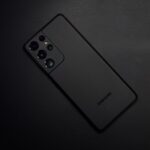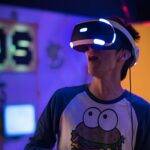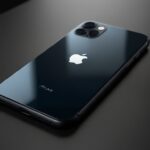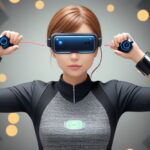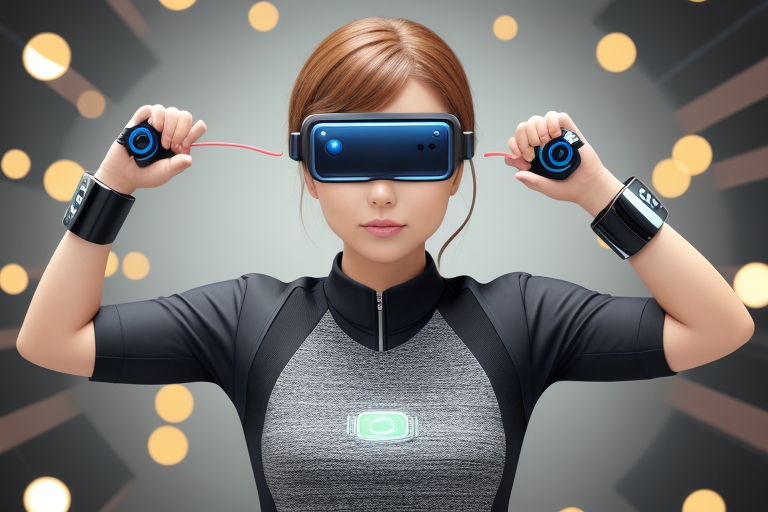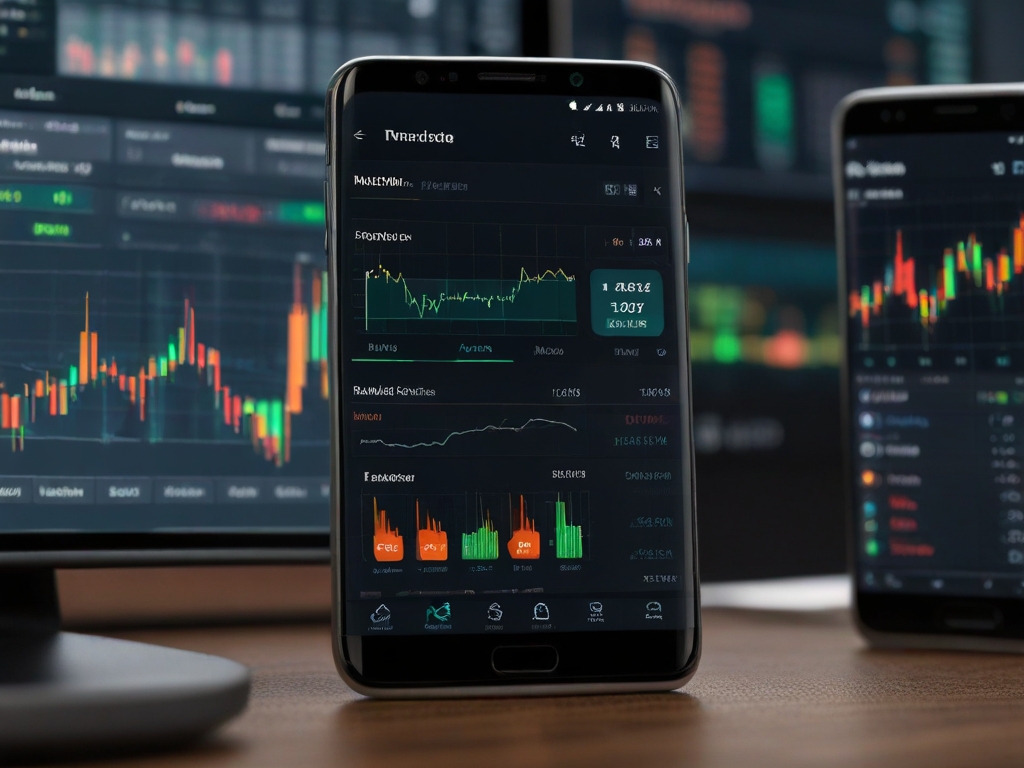Wearable technology has exploded in popularity and capabilities in recent years. In 2021 alone, wearable device sales grew nearly 18% to reach over 300 million units worldwide. From smartwatches to fitness trackers to augmented reality (AR) glasses, wearables have progressed tremendously over a relatively short period of time. This article will explore the major milestones in the evolution of wearable tech and provide an outlook on where it may be headed next. With global revenue projections topping $125 billion by 2026, it’s clear wearable tech will continue revolutionizing how we live, work, and interact with the world around us.
The origins of wearable technology trace back to the 1980s and 1990s with early forms of wearable computers. Innovators like Steve Mann developed some of the first digital eyeglasses and heads-up displays in an effort to augment human vision. While niche industries like manufacturing and the military found use cases for these early wearables, consumer adoption remained limited. It took until the late 1990s and early 2000s for wearable tech to gain mainstream appeal with inventions like the Bluetooth headset and digital music players like the MP3 player.
The History and Evolution of Wearable Tech
The First Wearable Computers
While the recent explosion of smartwatches and fitness trackers may make wearable technology seem like a relatively new phenomenon, its origins actually trace back several decades. The first wearable device considered a “computer” was designed in 1961 by mathematicians Edward Thorp and Claude Shannon. Their invention was a cigarette-pack sized analog computer used to predict roulette wheels. Throughout the 1970s and 1980s, inventors continued to create primitive forms of wearable computers, aimed primarily at niche industrial and military applications.
One of the pioneers of wearable technology was Steve Mann, who designed some of the earliest digital eyeglasses and heads-up displays starting in the late 1970s. These allowed users to overlay digital information and imagery over their real-world views. Mann was one of the founders of the field of “augmented reality” – technology that overlays digital interfaces onto the physical environment. While Mann’s inventions were groundbreaking, they relied on bulky equipment that prevented widespread consumer adoption. Nonetheless, his work helped pave the way for the digital eyewear and smart glasses to come.
Early Wearables Take Off
As computing power improved in the 1990s, wearable devices like calculator watches and personal digital assistants (PDAs) gained some traction, though mostly for business and industrial uses. In the late 1990s and early 2000s, wearable technology started appealing to consumers with inventions like Oakley’s MP3 sunglasses and the Bluetooth headset. The MP3 player also became a “wearable” tech phenomenon in the early 2000s, with the introduction of the Apple iPod in 2001.
Other significant wearable inventions during this period included:
- LifeShirt System (1997) – A “smart shirt” with integrated sensors for capturing cardiorespiratory activity
- IBM Linux Watch (2000) – One of the first watches capable of running mobile apps
- Fitbit Tracker (2008) – An early fitness tracker monitoring steps, calories burned, and sleep
Over time, these devices laid the groundwork for the rapid advancement and adoption of mainstream wearable technology in the 2010s and beyond.
The Rise of the Smartwatch
The Modern Smartwatch Arrives
After earlier attempts like Microsoft’s SPOT watch in 2004, the Pebble smartwatch finally brought the concept into the zeitgeist in 2012. The Pebble was funded via a record-breaking Kickstarter campaign and provided notifications, apps, and music control from users’ smartphones on their wrists. While the Pebble helped validate the smartwatch concept, it was the release of the Apple Watch in 2015 that made smartwatches ubiquitous.
The Apple Watch quickly became the world’s most popular smartwatch and helped revolutionize the form factor with its sleek, fashionable design and emphasis on fitness tracking. Other competitors like Samsung, Fitbit, and Garmin helped further expand the smartwatch market with devices running on Google’s Wear OS platform. By 2021, global smartwatch shipments exceeded 100 million units annually.
Leading the Smartwatch Revolution
The Apple Watch remains the undisputed leader in the smartwatch space, commanding over 30% market share as of 2021. However, Samsung has emerged as a strong contender with its Galaxy Watch series, which integrates well with its line of Galaxy smartphones. Fitbit also remains a leader with its health-focused smartwatches like the Sense and Versa that offer detailed fitness metrics.
Meanwhile, Google’s Wear OS powers watches from many manufacturers like Fossil, Mobvoi and Suunto. While Wear OS has faced challenges competing with the Apple Watch, Google’s pending acquisition of Fitbit in 2023 aims to bolster the platform. Other leading smartwatch providers rounding out the market include Garmin, Huawei, and Amazfit.
Transforming How We Live and Work
Beyond basic notifications, modern smartwatches are loaded with sensors and apps that transform how users interact with technology and take care of their health:
- Fitness Tracking Features – Continuous heart rate monitoring, workout tracking, sleep tracking and more allow users to better monitor and improve their health.
- Payments on the Wrist – NFC chips allow for contactless payments from the likes of Apple Pay and Google Pay on compatible smartwatches.
- Music Playback and Storage – Standalone music storage and Bluetooth connectivity to wireless earbuds allow phone-free music playback.
- Voice Assistants – Integrations with Siri, Google Assistant, and Alexa allow quick access to information and device control via voice commands.
- Smart Home Control – Users can conveniently control smart home devices like lights, thermostats and appliances directly from their smartwatch.
- Safety Features – Crash detection and emergency SOS calls provide peace of mind to users.
This array of capabilities is transforming smartwatches from novelty gadgets into indispensable tools integrated into users’ daily lives. And continued innovation will further unlock their potential.
The Evolution of Health and Fitness Wearables
From Step Counters to Sophisticated Trackers
One of the driving factors behind the wearable tech revolution is the focus on health and fitness. While early pedometers date back centuries, it wasn’t until the 1960s that compact electronic pedometers were invented. These allowed users to track their daily step counts.
In the 1970s, exercise scientists began researching the use of electronic devices to track movement and vitals during exercise. This paved the way for heart rate monitors by companies like Polar in the 1980s. It wasn’t until the 2000s that consumer fitness wearables started gaining mainstream traction with devices like the Fitbit Tracker and Nike+ Fuelband.
Today, fitness wearables have evolved far beyond basic step counters to provide detailed workout metrics and health data:
- Heart Rate Tracking – Optical sensors allow for continuous heart rate monitoring to quantify intensity during workouts and everyday life.
- GPS Tracking – Built-in GPS provides tracking of pace, distance and route maps for running and cycling.
- Sleep Tracking – Sensors track sleep stages, duration, and quality to help improve sleep health.
- Blood Oxygen Monitoring – Pulse oximeters detect blood oxygen saturation levels, which can indicate health issues.
- Smart Coaching – Devices provide customized tips and adaptive training plans tailored to the user’s fitness level and goals.
Empowering Users to Improve Their Health
Modern fitness wearables aim to go far beyond just tracking activities – they want to actually help transform users’ health. Research has shown the use of fitness trackers contributes to increased physical activity, weight loss, and reduced BMI. Consumer success stories back this up:
- Mary Johnson lost over 50 pounds after consistent use of her Fitbit helped her stay motivated to be more active and make healthier dietary choices.
- Marco Torres used his Garmin smartwatch to monitor his heart rate and track runs as he trained for his first marathon after being sedentary for years. He crushed his goal time.
- Sarah Kim found that wearing her Apple Watch kept her accountable and aware of her daily movement, motivating her to hit activity targets, which led to improved energy levels.
By providing real-time feedback and prompts, wearable devices help ingrain healthy habits into users’ daily routines over the long run. They make improving health and fitness feel more achievable and fun.
Success Stories in Health Wearables
Whoop Band – This strap tracks advanced metrics like heart rate variability and respiratory rate to optimize performance, recovery and sleep. It has amassed a cult following among athletes and achieved a $3.6 billion valuation in 2021.
Oura Ring – This smart ring monitors sleep, activity levels, heart health and more, with a sleek, jewelry-like design. Oura recently studied how its data could help detect early COVID-19 symptoms.
Lively – Focusing on senior health, Lively’s watches track vitals, detect falls and provide medication reminders while having an aesthetic more tailored for older users. Its medical alert system connects users instantly to emergency services.
The Future Is Here: Augmented Reality Smart Glasses
Defining and Understanding AR Glasses
Augmented reality (AR) refers to technology that overlays digital information and imagery onto the real, physical world. AR wearables like smartglasses take this concept to the next level by integrating it into an eyewear form factor for hands-free use. Unlike virtual reality (VR), which fully immerses users in a simulated world, AR aims to enhance natural senses.
Some capabilities and use cases of AR smart glasses include:
- Displaying navigation directions and destination information layered onto the user’s field of view
- Providing informational overlays and instructions on equipment/machinery during complex tasks
- Translating text instantly in a foreign language within the user’s line of sight
- Assisting visualization and training through immersive 3D projections
- Enabling hands-free communication and collaboration through virtual conferencing
AR applications span consumer uses like navigation and gaming to enterprise applications across manufacturing, field service, construction, and healthcare. As the technology improves, its versatility and adoption continue to proliferate.
Early Days of AR Glasses
The origins of AR headsets trace back to the 1990s with early virtual retinal display (VRD) prototypes developed by companies like Microvision. However, the first major consumer AR glasses were Google Glass, which launched in 2013. While the first iteration failed to gain traction, Google Glass demonstrated the limitless possibilities of AR eyewear.
In the following years, other companies like Vuzix, Meta (previously Facebook), and Snap released enhanced AR smart glasses models. Most remain enterprise-focused, though are steadily improving in design and capabilities. Apple and Samsung are now poised to help push AR glasses into the mainstream with their rumored headsets on the horizon.
Transforming Enterprise and Consumer Experiences
Even in their early stages, AR smart glasses are already transforming experiences across a variety of industries and applications:
- Healthcare – Smartglasses enable surgeons to view CT scans and data overlays during procedures and are being used for medical training simulations.
- Manufacturing and Field Service – AR assists frontline workers with equipment repair, quality assurance, remote collaboration with experts and more.
- Transportation – AR glasses can display real-time navigation directions and hazard warnings for drivers. Boeing uses AR in aircraft manufacturing.
- Construction – AR allows architects and builders to virtually overlay designs onto real buildings and identify potential issues.
- Sports and Entertainment – The NFL utilizes AR for enhanced game statistics overlays and virtual first-down lines. VR gaming headsets like Oculus Quest provide immersive experiences.
- Retail – Furniture and clothing retailers are exploring VR and AR to allow customers to visualize pieces in their own homes.
As smartglasses become more commonplace, consumers may soon leverage AR for everything from sightseeing to accessing information at a glance to interactive gaming.
Privacy, Ethics and Health Considerations
Privacy and Security Challenges
As consumer adoption of wearable devices grows, so do privacy and security concerns surrounding the vast amounts of personal data being collected. Fitness trackers and smartwatches gather intricate details on users’ location, movements, behaviors and more. Health metrics like heart rate and sleep data are also highly sensitive.
This data presents risks including:
- Personalized user data being hacked and leaked
- Activity history being sold to advertisers without consent
- Location tracking allowing unwanted surveillance and stalking
- Biometric data being stolen for identity fraud
Companies like Apple and Fitbit have been proactive in applying encryption and other security measures to safeguard user data. However, as breaches across all industries have shown, no connected system is ever completely foolproof. Users must weigh risks versus rewards when opting into wearable ecosystems.
Ethical Implications of Wearable Data Use
Beyond security, broader ethical questions surround how wearable data should and shouldn’t be used. The highly personal nature of biometric and activity data elicits debates over:
- Informed consent – Are users fully aware of all the data collected and how it’s used when they agree to wearable terms of service? Should they have greater control over data usage?
- Discrimination – Could health insurance providers misuse fitness data like heart rate info to discriminate against customers? Could employers discriminate based on physical activity?
- Government surveillance – Could authorities attempt to access or compel wearable data for surveillance purposes without users’ knowledge or consent?
Wearable users, governments, and companies will need to navigate these issues collaboratively. Ethical principles like transparency, consent, privacy, and responsible usage should help guide policies and practices around wearable data.
Health and Wellbeing Considerations
Though fitness trackers aim to improve health, concerns exist around potentially detrimental effects of wearable overuse:
- Addiction – Some users become overly obsessed with monitoring performance stats and metrics continuously. This technology addiction can negatively impact mental health and relationships.
- Anxiety – Constant bio-monitoring could heighten anxieties for some individuals and contribute to cyberchondria.
- Sleep Disruption – Bright screens and haptic feedback from wrist-worn wearables may interfere with natural sleep cycles.
- Eye Strain – Prolonged use of heads-up displays in AR glasses could cause visual fatigue, headaches, and issues like strabismus.
To help mitigate risks, experts recommend practices like setting usage limits, disabling notifications during focus time, removing wearables an hour before bed, and taking regular screen breaks. As with all technology, moderation and smart usage habits are key.
The Road Ahead: The Future of Wearable Technology
Market Growth Forecasts and Emerging Trends
Driven by steady technological improvements and expanding consumer use cases, the global wearable technology market is poised for monumental growth in the years ahead:
- According to IDC, total wearable band shipments are projected to reach 158.7 million units in 2023, a 13% increase from 2022. By 2026, over 238 million units are expected to ship annually.
- Smartwatch shipments are forecasted to grow from 151 million in 2022 to over 208 million by 2025 per IDC. Growth will be fueled by new health sensors and cellular connectivity.
- Global AR/VR headset revenues are predicted to skyrocket from $6.3 billion in 2022 to nearly $50 billion by 2026 in ABI Research’s estimates.
Further fueling market expansion will be the rise of hearables, implantables, e-textiles, skin patches and more that push the boundaries of wearable technology innovation.
The Role of 5G and Artificial Intelligence
Driving these exponential advances in wearables will be complementary technologies like 5G networks, artificial intelligence (AI), and the Internet of Things (IoT).
- 5G’s super-fast speeds and ultra-low latency will enable real-time collection and analysis of vast biometric datasets from next-gen health wearables. This can enhance preventative health and personalized medicine.
- Edge computing leveraged via 5G networks will allow processing of data directly on devices for greater efficiency, security and privacy.
- AI and machine learning will allow smart coaching features powered by predictive analytics to provide users with more customized recommendations, insights and training guidance.
- IoT integration will connect wearables with surrounding smart home gyms, appliances, vehicles and other tech to create an immersive, responsive environment.
By converging these technologies, wearables of the future will act less like standalone gadgets and more like integrated, intelligent assistants enhancing all aspects of users’ lives.
The Possibilities and Challenges Ahead
Speculating on the future, we may see smartwatches transform into full-fledged wrist-worn command centers for controlling smart homes, vehicles, and cities brimming with sensors. Sleek AR glasses could overlay everything from navigation to virtual workspaces and immersive entertainment. AI assistants may feel like an extension of our own minds. Implanted sensors could provide 24/7 biometric monitoring and early disease detection.
But technical constraints around battery life, computing power, camera capabilities and network coverage will need to be overcome to achieve this vision. Wearable companies must also balance dazzling innovation with thoughtful designs that avoid information overload and address real consumer needs. If the human experience remains central in future product development, the possibilities for wearable tech to enhance our lives are boundless.
Conclusion
In just over three decades, wearable technology has gone from clunky novelties to sophisticated, ubiquitous devices transforming how we live, work, and take care of our health. From early heads-up displays to today’s sleek smartwatches and AR glasses, wearable innovation continues accelerating at a dizzying pace.
With smartwatches now commonplace and AR glasses soon to follow, wearables keep extending human capabilities in revolutionary new directions. Even with new challenges surrounding privacy, ethics and responsible design, wearable technology remains poised to transform modern life through human-centric innovation. If companies and policymakers collaborate to maximize benefits while minimizing harm, the future for ubiquitous and intelligent wearables looks incredibly promising.


